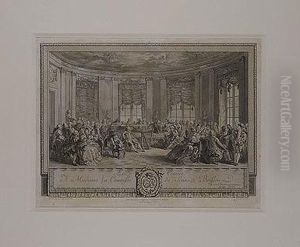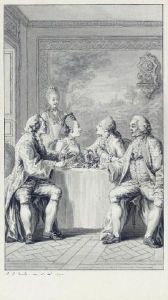Antoine Jean Duclos Paintings
Antoine Jean Duclos was a French engraver and draughtsman born in 1742, a period that was characterized by the flourishing of the arts under the patronage of the French monarchy, before the tumult of the French Revolution. Duclos' life and career were significantly shaped by the cultural and political climate of his times, which saw the transition from the opulence of the Ancien Régime to the upheavals of the Revolution.
Duclos' artistic journey began in an era when the Rococo style, with its emphasis on ornate decoration, lightness, and fluidity, was giving way to Neoclassicism's return to classical simplicity, harmony, and grandeur. This shift was reflective of the broader Enlightenment ideals that were gaining momentum in France, advocating for reason, science, and a new social order based on merit rather than birthright. Duclos, like many artists of his generation, found himself at the crossroads of these significant cultural transformations.
Throughout his career, Duclos mastered the art of engraving, a technique that involves incising a design onto a hard, usually flat surface, by cutting grooves into it. This skill was highly valued in the production of prints, which were an important means of disseminating art and ideas during the 18th century. His works are characterized by their precision and attention to detail, qualities that made him a sought-after engraver in the production of illustrations for books and artworks.
Despite the rich cultural environment that nurtured his talent, Duclos' career was inevitably impacted by the French Revolution, which began in 1789. The Revolution, with its radical political and social upheavals, profoundly affected the arts in France. Many patrons of the arts, including the monarchy and the aristocracy, were displaced or executed, leading to a decline in traditional commissions. Artists had to navigate these turbulent times, adapting to the changing tastes and ideologies of the new Republic.
Antoine Jean Duclos' life came to an end in 1795, in the aftermath of the Revolution. Although the details of his later years and the circumstances of his death are less documented, his contributions to the world of French engraving remain significant. His works continue to be appreciated for their technical skill and beauty, offering insights into the artistic and cultural landscapes of late 18th-century France. Duclos' legacy is a testament to the enduring power of art to reflect and respond to the complexities of its time.

